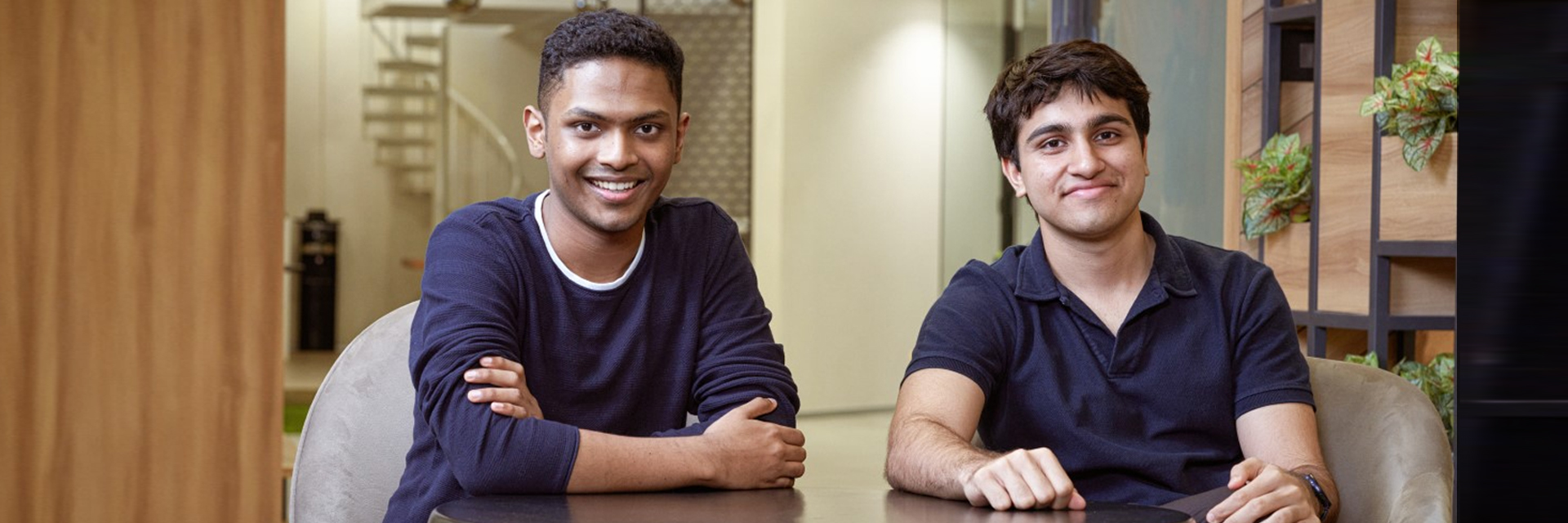(September 23, 2023) Samyak and Sowmay are still on the right side of 20, but are at the helm of the fifth largest company in the decentralised finance space globally. As it is with every great success, this story begins with a big idea, and a big risk. Much to the alarm of their parents in Kota, Rajasthan, the young baadshahs of blockchain dropped out of college – Samyak was doing engineering and his older brother, Sowmay, was on his way to being a Chartered Accountant – to follow their interest in cryptocurrency and found Instadapp, which has already become a major disruptor in the global DeFi space.Their parents wished they would find ‘real jobs’ but the brothers weren’t just goofing around – they had found their purpose and wanted to give it everything they had. In their case, the risk paid off.
As of 2022, the company had raised two rounds of funding, and got the attention of top investors like Naval Ravikanth and Pantera Capital in the first round, raising $12.4 million. “The funding gave us a lot of boost, especially in convincing our parents who used to insist on us getting a real job,” Sowmay, who is now 25 (his brother is 23) told Forbes, shortly after the brothers made it to the magazine’s coveted Gamechangers list in 2022. The company has assets worth $10.6 billion circulating in smart contracts, says Forbes.

Sowmay and Samyak Jain. Photo: Forbes
How it began
The first turning point for the dynamic Global Indians came in August 2018. They participated – and won – the ETHIndia hackathon in Bengaluru, one of India’s biggest Ethereum events. Ethereum is a decentralised, open-source blockhain system where people can write smart contracts (programs that follow rules automatically without the need for a middleman).
United by their interest in blockchain and decentralised finance, it was at this hackathon that Samyak and Sowmay Jain first created the Instadapp platform. “It started as a passion for us but we pursued it and came out on top in the hackathon,” Sowmay said an in interview. “We kept on expanding Instadapp, adding new features and addressing additional difficulties in decentralised financing.”
In September 2019, they went in for their first round of funding and came out shining, with big ticket names flocking to be part of Instadapp.
Defining DeFi
This story begins with Decentralised Finance, or DeFi, as it is known in tech circles. It’s a gamechanger in the financial landscape, using blockchain technology to reimaine and rebuild traditional financial instruments like loans, insurance and trading. The main platform for facilitating this is the Ethereum blockchain.
Conventional finance operations work through banks, brokerages and exchanges, all of which act as middlemen to facilitate transactions, grant loans and manage assets. These are the gatekeepers and each have their own terms and conditions and methods for verifying transactions. DeFi on the other hand, has an open approach. A team of developers create a generic smart contract which will autonomously execute, allowing users to interact directly with each other and to input specific terms, like the amount to lend, the interest rate and duration, inc ase of a loan.
How does InstadApp work?
Obviously, it’s a complex world. That’s where InstadApp comes in – it provides a user-friendly interface to simplify interaction with these otherwise complicated DeFi protocols. So instead of users having to directly interact with the complex world of smart contracts and decentralised platforms, InstadApp works as a bridge, and makes it easier for users to tweak and use these smart contracts.
Instadapp is like an app store, but for all things crypto. It acts as a bridge between the traditional cash economy and the newer blockchain-based decentralised currencies. Basically, it helps convert transactions done with regular money into cryptocurrency, based on how individuals interact within the online space.
The concept is in big demand, indicated by the fact that InstadApp manages over $10 billion in assets. Instadapp stands out in this space by offering itself as a platform for developers to craft and refine trading tools and protocols. Developers can create interfaces on InstadApp that are tailored to the evolving needs of the market.


“Instadapp’s revenue strategy will be to deduct fees on financial volumes and lending / borrowing going through the platform,” Sowmay explains. That’s in the future, though. Right now, it’s all free. “We intend to establish our tokens / DAO and determine the fees.” A DAO (Decentralized Autonomous Organization) is a digital organization that operates based on pre-set rules encoded as computer programs, known as smart contracts, without centralized control. Operating on blockchain technology, it allows multiple participants to make decisions collaboratively. Tokens, in this context, are digital assets or units of value issued by projects or organizations on the blockchain. They can represent various utilities within a specific ecosystem, such as granting access to services, providing voting rights in a DAO, or acting as a medium of exchange.
Why it’s a gamechanger
InstadApp is not the first payment gateway of its sort. However, as Samyak explains, “We cover the whole DeFi space – borrowing and lending, investments. There are lots of opportunities for frontend developers to build different apps. It can evolve further in the future and maybe replace bank accounts,” he smiles.




